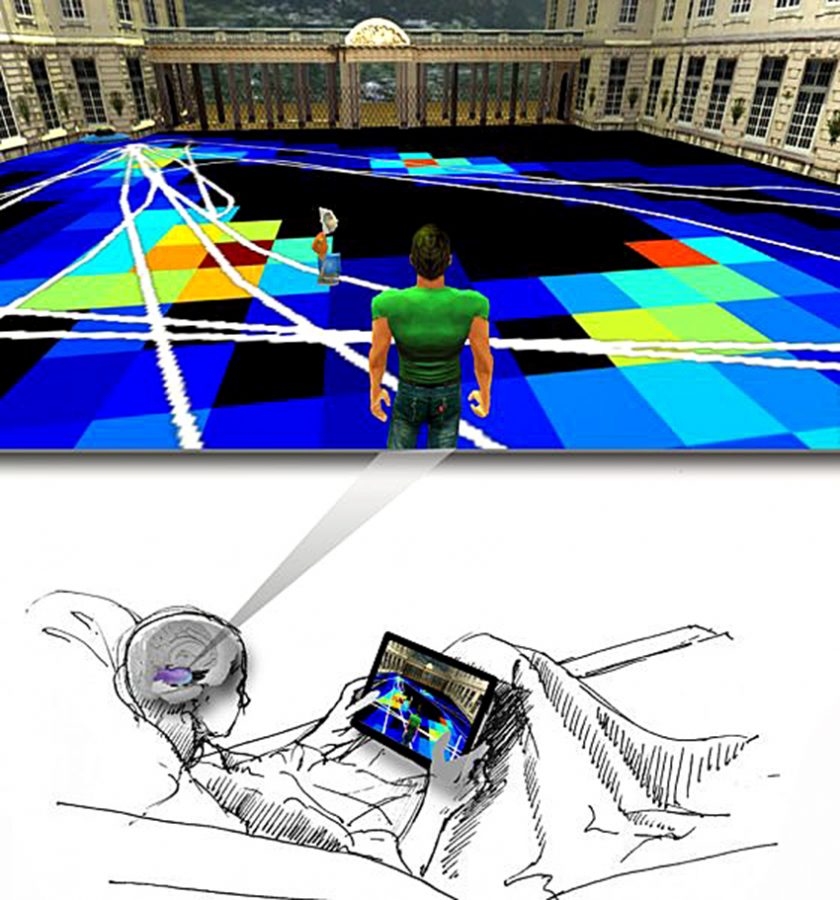Researchers and scientists at UT-Austin are working together to understand the brain, treat neurological diseases and build tools to enhance the capabilities of brains.
The Neural Interface Initiative was started by biomedical engineering associate professor Chong Xie, mechanical engineering professor James Sulzer and Robert Buchanan, chief neurosurgeon at Seton and psychology professor in early 2017. The initiative hopes to create a collaborative research effort where professors work together to solve the mysteries of the brain.
“(This is) a group of scientists interested in studying how we can make a connection with the nervous system invasively and noninvasively and try to interpret those signals that we get, (and) create better ways of recording those signals,” Buchanan said.
Buchanan added that the scientists’ ultimate goal is aligned with the goal of neuroscience itself: enhancing the function of the brain. He said NII hopes to accomplish this by delivering electrical impulses and similar signals through probes.
“We are at such an early stage of understanding the brain in neuroscience and in human neuroscience specifically,” Buchanan said.
Buchanan said it is crucial that NII connects these disciplines so that each scientist can bring out their specific strengths and work on each piece of the neural pie.
The group’s first corporate meetings are underway with Kernel, a progenitor to Elon Musk’s new brain initiative focused on studying neurodegenerative diseases through electrical signals, being quite impressed with the structure and function of the NII, Buchanan said.
“We have already begun the process of building a highly specific electrode to measure and deliver electrical currents, so with this little bit of a head start in a sense, they (Kernel) were very impressed and want to continue the conversations with us,” Buchanan said.
Buchanan said the goals of the initiative are quite comprehensive, spanning simply understanding key locations and dynamics of the brain, treating disorders and building the future of brain-machine interfaces.
“Because I’m a physician, the ultimate good that comes out of this is to be able to improve the state of people who have certain diseases like Alzheimer’s disease, Parkinson’s disease or traumatic brain injury,” Buchanan said. “The other thing is to find better ways of studying the brain.”
Zoltan Nadasdy, assistant professor of psychology and part of the NII, said his research work involves both treating and studying the brain. He studies brain cells that are involved with neurodegenerative diseases as well as noninvasive techniques to record brain signals.
“One of my projects is creating a nice model system for understanding the neuronal representations of the outside world,” Nadasdy said. “It is fairly abstract, but it serves as a neural framework for episodic memory, which we think is crucial for understanding and improving memory.”
Buchanan said the NII aims to create more refined tools for scientists to use to study and understand the brain.
“We treat depression, which we don’t understand, with drugs that we don’t really understand how they work,” Buchanan said. “We treat Parkinson’s disease, but we don’t know what causes it, with electricity that we are putting somewhere where it seems to do something, but we don’t understand what that something is.”
Buchanan said the first step for NII is to build better probes and better electrical recording systems so that neuroscientists can better understand the diseases they are trying to treat.
“It all bottlenecks into a question of communicating with the brain and then the brain communicating with us,” Buchanan said.















